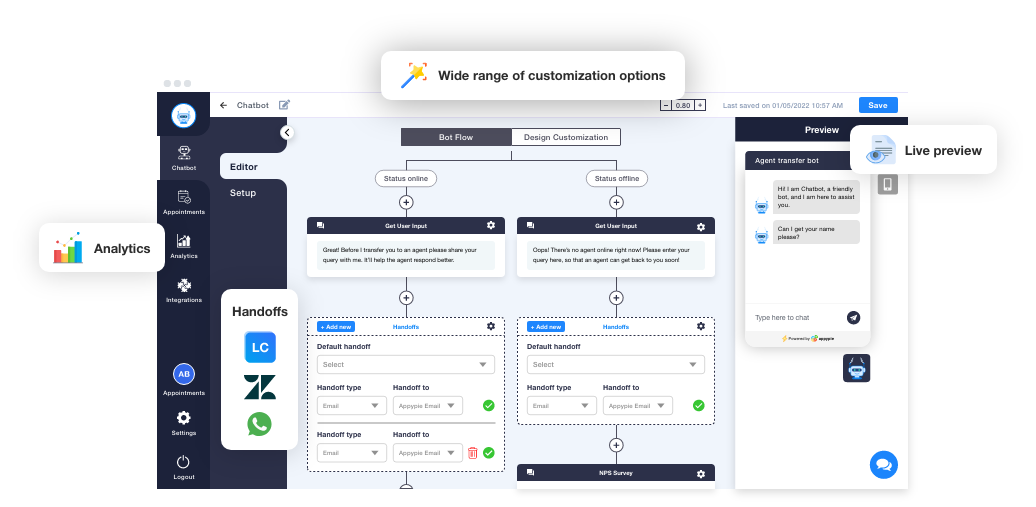
A NLP coursera may be a good option if you are interested learning more about Natural Language Processing. This topic is growing rapidly and is used frequently in data mining applications. This Python-based course features a hands-on project. You will also be able apply your knowledge to real-world situations. NLP is an excellent option for professionals who want to improve their current skills or those looking for a new career.
Natural language processing has been a rapidly growing field.
This course is ideal for those who are interested both in data science and the implications of natural-language processing. It teaches core techniques for text analysis, machine learning algorithms, and Python programming. The course will also teach you about the differences between artificial and human reading. Coursera's programming skills are required for this course. The final project will demonstrate the skills learned.
Codecademy's NLP class is an excellent option for beginners. This course covers all the essentials and launches you directly into the certification track. To get more advanced training, you can either take the PRO program for a reduced fee or enroll in simple classes. Prices for subscriptions vary depending on how many months you choose. There are many classes available in the field that you can access, and they can be completed in your spare time.

It is used to do data mining
Natural Language Processing (or NLP), is a key technology in many companies. This technology helps them understand text and other forms of data, and then create algorithms for interpreting that information. NLP has become a popular career path for many companies. You can learn about this process in one of the many courses Coursera offers. There are several options available for this course, from one-day courses to full-time degree programs.
It is a Python field
Learning Python is a skill that many people wish they had. This language is extremely versatile and has many uses, including data analysis, machine learning, web development, and more. This course will teach you Python basics. It also teaches you how to use Jupyter notebooks and other Python-based tools. After you've completed the course, you can apply your newfound knowledge to a variety of real-world projects, from creating an online game to working with large datasets.
The course includes an introduction to programming concepts and the pandas database science library and numpy. Students will also learn the basics about data structures, such as DataFrames series and Series. They will also be able to use data structures such as pivot tables, and basic statistical analysis tools like matplotlib. The Capstone Project will be a demonstration of students' knowledge and application development.
It includes a hands-on project
This course is for you if your interest lies in Natural Language Processing. While you'll learn about the theory behind NLP concepts, this hands on project-based course will show how to apply them in practical situations. You'll learn how to tune hyperparameters and build an article spinner.

There are 5+ instructors with expertise in natural language processing. After completing the course, you will be able to learn the basics and build your confidence. You will learn topics such as text embedding (machine translation), tagging and classification. An actual project will give you practical experience and help develop a Python-based application. The Natural Language Processing Coursera is broken down into five modules. Learners will receive information about language modeling, semantic search, text classification, sequence tag, and text classification.
FAQ
Is Alexa an Artificial Intelligence?
The answer is yes. But not quite yet.
Amazon has developed Alexa, a cloud-based voice system. It allows users interact with devices by speaking.
The technology behind Alexa was first released as part of the Echo smart speaker. However, since then, other companies have used similar technologies to create their own versions of Alexa.
Some of these include Google Home, Apple's Siri, and Microsoft's Cortana.
How does AI work?
An artificial neural network consists of many simple processors named neurons. Each neuron receives inputs from other neurons and processes them using mathematical operations.
Neurons are organized in layers. Each layer has its own function. The first layer receives raw data, such as sounds and images. Then it passes these on to the next layer, which processes them further. Finally, the last layer produces an output.
Each neuron has an associated weighting value. This value gets multiplied by new input and then added to the sum weighted of all previous values. If the result exceeds zero, the neuron will activate. It sends a signal up the line, telling the next Neuron what to do.
This is repeated until the network ends. The final results will be obtained.
What are some examples AI apps?
AI can be applied in many areas such as finance, healthcare manufacturing, transportation, energy and education. Here are just some examples:
-
Finance - AI already helps banks detect fraud. AI can detect suspicious activity in millions of transactions each day by scanning them.
-
Healthcare – AI helps diagnose and spot cancerous cell, and recommends treatments.
-
Manufacturing - AI is used in factories to improve efficiency and reduce costs.
-
Transportation - Self driving cars have been successfully tested in California. They are currently being tested all over the world.
-
Utility companies use AI to monitor energy usage patterns.
-
Education - AI can be used to teach. Students can communicate with robots through their smartphones, for instance.
-
Government - AI can be used within government to track terrorists, criminals, or missing people.
-
Law Enforcement – AI is being used in police investigations. The databases can contain thousands of hours' worth of CCTV footage that detectives can search.
-
Defense - AI is being used both offensively and defensively. Artificial intelligence systems can be used to hack enemy computers. For defense purposes, AI systems can be used for cyber security to protect military bases.
What does AI look like today?
Artificial intelligence (AI), a general term, refers to machine learning, natural languages processing, robots, neural networks and expert systems. It is also called smart machines.
The first computer programs were written by Alan Turing in 1950. He was fascinated by computers being able to think. He suggested an artificial intelligence test in "Computing Machinery and Intelligence," his paper. The test asks if a computer program can carry on a conversation with a human.
John McCarthy introduced artificial intelligence in 1956 and created the term "artificial Intelligence" through his article "Artificial Intelligence".
There are many AI-based technologies available today. Some are simple and straightforward, while others require more effort. They can be voice recognition software or self-driving car.
There are two main categories of AI: rule-based and statistical. Rule-based AI uses logic to make decisions. A bank account balance could be calculated by rules such as: If the amount is $10 or greater, withdraw $5 and if it is less, deposit $1. Statistics is the use of statistics to make decisions. For instance, a weather forecast might look at historical data to predict what will happen next.
Why is AI important?
It is expected that there will be billions of connected devices within the next 30 years. These devices will include everything from cars to fridges. The combination of billions of devices and the internet makes up the Internet of Things (IoT). IoT devices and the internet will communicate with one another, sharing information. They will be able make their own decisions. For example, a fridge might decide whether to order more milk based on past consumption patterns.
It is anticipated that by 2025, there will have been 50 billion IoT device. This is a tremendous opportunity for businesses. This presents a huge opportunity for businesses, but it also raises security and privacy concerns.
Which countries are currently leading the AI market, and why?
China leads the global Artificial Intelligence market with more than $2 billion in revenue generated in 2018. China's AI market is led by Baidu. Tencent Holdings Ltd. Tencent Holdings Ltd. Huawei Technologies Co. Ltd. Xiaomi Technology Inc.
China's government is investing heavily in AI research and development. The Chinese government has set up several research centers dedicated to improving AI capabilities. These include the National Laboratory of Pattern Recognition, the State Key Lab of Virtual Reality Technology and Systems, and the State Key Laboratory of Software Development Environment.
Some of the largest companies in China include Baidu, Tencent and Tencent. All these companies are active in developing their own AI strategies.
India is another country that has made significant progress in developing AI and related technology. India's government is currently focusing its efforts on developing a robust AI ecosystem.
Statistics
- Additionally, keeping in mind the current crisis, the AI is designed in a manner where it reduces the carbon footprint by 20-40%. (analyticsinsight.net)
- According to the company's website, more than 800 financial firms use AlphaSense, including some Fortune 500 corporations. (builtin.com)
- While all of it is still what seems like a far way off, the future of this technology presents a Catch-22, able to solve the world's problems and likely to power all the A.I. systems on earth, but also incredibly dangerous in the wrong hands. (forbes.com)
- That's as many of us that have been in that AI space would say, it's about 70 or 80 percent of the work. (finra.org)
- A 2021 Pew Research survey revealed that 37 percent of respondents who are more concerned than excited about AI had concerns including job loss, privacy, and AI's potential to “surpass human skills.” (builtin.com)
External Links
How To
How do I start using AI?
Artificial intelligence can be used to create algorithms that learn from their mistakes. The algorithm can then be improved upon by applying this learning.
A feature that suggests words for completing a sentence could be added to a text messaging system. It would take information from your previous messages and suggest similar phrases to you.
You'd have to train the system first, though, to make sure it knows what you mean when you ask it to write something.
Chatbots can be created to answer your questions. So, for example, you might want to know "What time is my flight?" The bot will answer, "The next one leaves at 8:30 am."
Our guide will show you how to get started in machine learning.